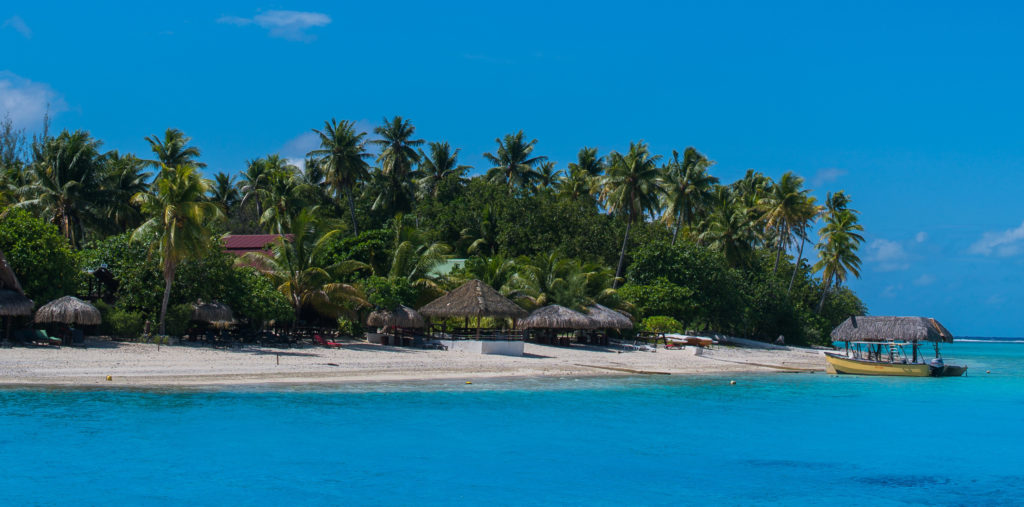by Cassidy Nunn –
I wouldn’t consider myself a “boat person.” Aside from my yearly speed boat ride with friends on Sproat Lake, the nautical lifestyle isn’t a part of my family history. I’d never spent a night on a vessel before last April when we (my soon-to-be-husband, his parents and brother) embarked on a 14-day adventure in French Polynesia. Our home for the two weeks: a 40-foot catamaran complete with four bedrooms, four bathrooms, a kitchen, indoor and outdoor dining areas, a kayak, stand-up paddle board, fishing rods and a dinghy.
The French Polynesian islands have a population of approximately 270,000 spread across the 118 islands in the South Pacific. Tahiti is the largest and most populated island; it acts as the main hub for international flights to the region landing in the capital city of Papeete.
It took us several flights and two days of travel from Victoria to arrive on the smaller island of Raiatea where our boat was waiting for us at the marina. We first set sail for Bora Bora, which is likely the most well-known of the Polynesian islands. It’s renowned for its exquisite beauty with a massive turquoise lagoon, vibrant greenery, an expansive protective barrier reef that surrounds almost the entire island, and many luxe resorts boasting romantic bungalows on the water.
We spent the first few days sailing around the island, finding a mooring ball in a different location each night and making the occasional trek onto land via our dinghy for more groceries and supplies. The days started early, with the sun rising around 6 a.m. and then setting about 6 p.m. Evenings were spent cooking supper, playing card games and going to bed early for the most part. With no TV and little access to WiFi, it was a good break from technology and I devoured several books over the course of the trip.
Once we’d toured around Bora Bora, we attempted to leave for Raiatea, a journey that should take a few hours across the open sea. After a couple of grueling hours making what seemed like little progress against the stormy ocean, we decided to turn back and try again the following day. It was like Groundhog Day when we all awoke for the early start, again, but thankfully the sun was out and while there was still some chop, the waves were more forgiving and we made it safely to Raiatea.
Several times we were joined by dolphins who would swim beside the catamaran as we motored along; I’d sit at the front of the boat, camera in hand, wind in my hair and admire their speed as they darted through the water, occasionally veering off sideways and leaping out of the water in a spin. We lived in our swimsuits all day, periodically jumping off the boat to cool off in the tropical waters. As soon as my suit would dry out in the scorching sun, we’d be hit with another intense rain shower, soaking us and the boat. Ten minutes later, after the rain stopped, we’d be dry again and ready to hop into the ocean.
Over the course of our trip I ate my weight in baguettes, attempted yoga on a stand-up paddle board, kayaked, snorkeled with sting rays, tried my hand at underwater photography, and even went horseback riding. I have this special ability to find horses just about everywhere I travel, and French Polynesia was no exception! Ranch Cadichon Vallee is on Raiatea and home to several horses. I spent a glorious afternoon trail riding up a mountain into the tropical forest and then finished off the ride by taking the horses for a swim in the ocean.
We also had the pleasure of visiting a local farm way off the beaten path; the proud farmer showed us his amazing spread of bananas, sweet potato, lychee nuts, papaya, green beans, tarot root, coconut, mangoes (which weren’t in season while we were there unfortunately) and limes. We left with a dinghy full of fresh fruits and veggies.
Another mandatory stop while in French Polynesia is a visit to a pearl farm. The region is famous for its cultured pearls and the darker colours come from the specific variety of oyster that “grow” the pearl. A pearl reaches its maturity in two years and is sorted into classes with A being the highest and most expensive (the pearl has almost no imperfections) to B (the pearl is round and has a nice colour but may have a few imperfections) to C and so on.
Somehow, we all survived two weeks on the boat without throwing each other overboard! I can now boast that I do in fact have pretty strong sea legs, and should I ever need to test them out again, I hope it’s somewhere as beautiful as French Polynesia.
Photos by Nunn Other Photography




